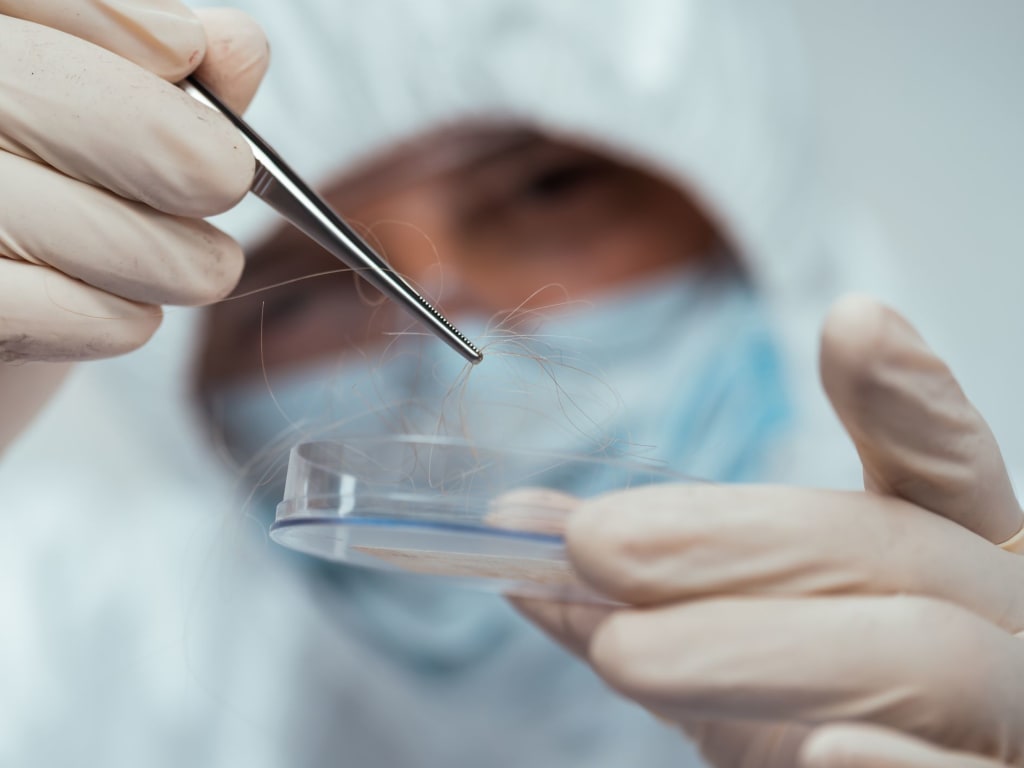How Hair Follicle Alcohol Tests Work: Understanding the Science Behind It
Exploring the Mechanisms and Benefits of Hair Follicle Alcohol Testing

Introduction
In today's world, where alcohol consumption can have significant personal and professional consequences, understanding the various methods of alcohol detection is crucial. Among these methods, hair follicle alcohol testing stands out for its unique approach and extended detection window. But how does it work? What makes it different from other testing methods?
Let's dive into the science behind hair follicle alcohol tests to uncover the answers.
What is Hair Follicle Alcohol Testing?
Hair follicle alcohol testing is a method used to detect the presence of alcohol metabolites in hair strands. Unlike breath, blood, or urine tests, which can only detect recent alcohol consumption, hair follicle tests can reveal patterns of alcohol use over a more extended period, typically up to 90 days. This makes it an invaluable tool for monitoring long-term alcohol consumption.
The Science Behind Hair Follicle Testing
To understand how hair follicle testing works, it's essential to grasp the biological processes involved. When alcohol is consumed, it is metabolized by the liver into various compounds, including ethyl glucuronide (EtG) and fatty acid ethyl esters (FAEEs). These metabolites enter the bloodstream and eventually get incorporated into the hair as it grows. Hair grows approximately 1.5 centimeters per month, meaning a 3-centimeter hair sample can provide a three-month history of alcohol consumption.
Why Use Hair Follicle Tests for Alcohol Detection?
Hair follicle tests offer several advantages over other alcohol testing methods. Firstly, they have a much longer detection window, allowing for the identification of chronic alcohol use. Additionally, hair samples are easier to collect and store compared to blood or urine samples. They are also less invasive and more difficult to adulterate, making them a reliable choice for both legal and employment purposes.
The Procedure of Hair Follicle Alcohol Testing
The testing process begins with the collection of a hair sample, usually from the head. However, body hair can also be used if necessary. The sample is then sent to a laboratory, where it undergoes a series of chemical analyses to detect the presence of alcohol metabolites. Advanced techniques such as liquid chromatography-tandem mass spectrometry (LC-MS/MS) are commonly used to ensure high accuracy and sensitivity.
Detection Window for Hair Follicle Alcohol Tests
One of the key benefits of hair follicle alcohol testing is its extended detection window. While blood and urine tests can only detect alcohol consumption within a few hours to a few days, hair follicle tests can provide a history of alcohol use over the past 90 days. This makes it particularly useful for monitoring long-term alcohol consumption patterns.
Accuracy and Reliability of Hair Follicle Alcohol Tests
Hair follicle tests are known for their high accuracy and reliability. The sophisticated laboratory techniques used minimize the risk of false positives and false negatives. However, factors such as hair color, cosmetic treatments, and environmental exposure can influence the results. Despite these variables, hair follicle tests are generally considered one of the most reliable methods for detecting chronic alcohol use.
Limitations of Hair Follicle Alcohol Testing
While hair follicle tests offer many advantages, they also have limitations. For instance, they are not effective for detecting very recent alcohol consumption, as it takes time for alcohol metabolites to incorporate into hair. Additionally, factors like hair length and growth rate can affect the detection window. It's also worth noting that heavy drinkers who abstain for a short period before the test may not be accurately identified.
Interpreting Test Results
Interpreting hair follicle alcohol test results requires an understanding of the difference between positive and negative results. A positive result indicates the presence of alcohol metabolites above a certain threshold, suggesting regular alcohol consumption. However, false positives can occur due to environmental exposure to alcohol-containing products. Conversely, a negative result does not necessarily mean complete abstinence, especially if the individual has only recently reduced their alcohol intake.
The Role of Hair Follicle Tests in Legal and Employment Settings
Hair follicle alcohol tests play a significant role in legal and employment settings. In legal cases, they can provide evidence of chronic alcohol use, which might be relevant in custody battles, probation requirements, or other legal matters. In the workplace, employers may use hair follicle tests to ensure a safe and productive environment, especially in industries where safety is paramount.
Preparing for a Hair Follicle Alcohol Test
If you are scheduled to take a hair follicle alcohol test, it's helpful to know what to expect. The collection process is straightforward and non-invasive. Ensure your hair is clean and free from heavy cosmetic treatments. While there's no way to "beat" the test, being aware of what it entails can help reduce any anxiety you might have.
Ethical and Privacy Concerns
As with any form of testing, hair follicle alcohol tests raise ethical and privacy concerns. It's important that such tests are conducted with respect for individuals' rights and confidentiality. Consent should always be obtained, and the purpose of the test should be clearly explained. Balancing the need for monitoring with respect for personal privacy is crucial.
Future Developments in Hair Follicle Testing
The field of hair follicle testing is continually evolving. Advances in technology are making tests more accurate and less invasive. Research is ongoing to develop methods that can differentiate between external exposure to alcohol and actual consumption. These developments promise to enhance the utility and reliability of hair follicle alcohol tests in the future.
Conclusion
Understanding how hair follicle alcohol tests work provides valuable insights into their effectiveness and limitations. These tests offer a reliable method for detecting long-term alcohol use, making them useful in various settings from the workplace to the courtroom. While they have their limitations, ongoing advancements promise to enhance their accuracy and reliability. As we continue to seek better ways to monitor alcohol consumption, hair follicle testing remains a crucial tool in the arsenal.
About the Creator
Enjoyed the story? Support the Creator.
Subscribe for free to receive all their stories in your feed. You could also pledge your support or give them a one-off tip, letting them know you appreciate their work.






Comments
There are no comments for this story
Be the first to respond and start the conversation.